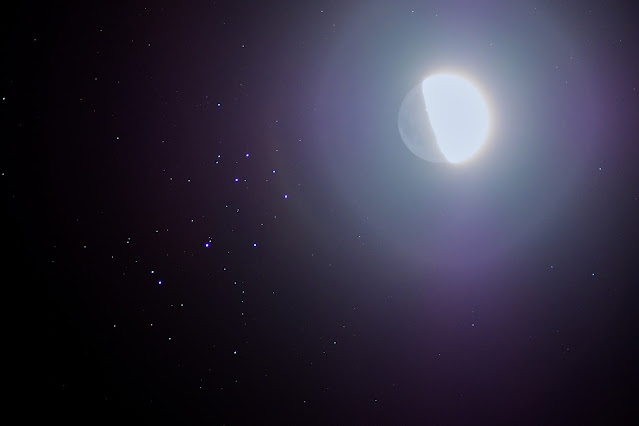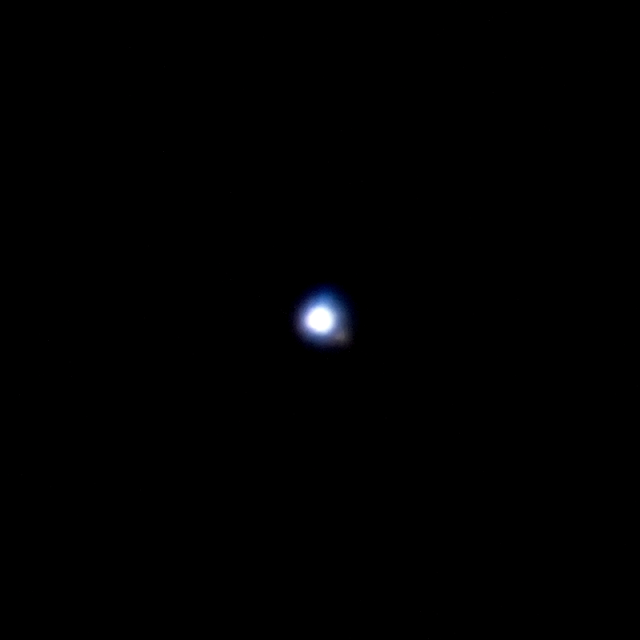The moon passed in front of the Pleiades star cluster on Wednesday night, 05 Feb. That occultation did not begin until about midnight. An image taken at 10:47 pm shows the moon approaching the cluster.
This was a 1-sec exposure at ISO 400 with a Nikon 180mm f/2.8 ED Ai-S lens. This was a diffucult image to capture because of the large difference in brightness between the stars and the moon. Here is a version (ISO 1600) that shows more stars, but a vastly overexposed moon:
Jupiter is currently close to the Hyades Cluster:
 |
| Olympus 75mm f/1.8, Kase Astroblast filter. ISO 400, 15 sec. |
Aldebaran is a very red star, but it looks greenish (teal?) here, which is completely unnatural. My best guess is that the diffusion filter is causing the longitudinal chromatic aberration (purple fringing) from the lens to be emphasized more than the saturated color at the core of the star image. The deep blue sky from scattered moonlight may also be a factor.
Without the diffusion filter, two moons of Jupiter were resolved by the camera:
The two stars closest to Jupiter are the Galilean moons Callisto (left) and Ganymede (right). The other two Galilean moons (Io and Europa) are lost in the glare of Jupiter.
Mars is making a bright triangle with Castor and Pollux in Gemini.
 |
| Olympus 75mm f/1.8. Kase Astroblast filter. |
The third star labeled in this image is Wasat, Delta Geminorum. It is a nice double star for small telescopes. The two components are magnitude 3.6 and 8.2, separated by 5.6 arcsec. I was able to separate the pair photographically with the Celestron C6 and a 2.5x Powermate:
This image is a stack of eight exposures, 1/3 sec, ISO 1600. A digital filter helps make the dim companion stand out better:





No comments:
Post a Comment
Comments are moderated.